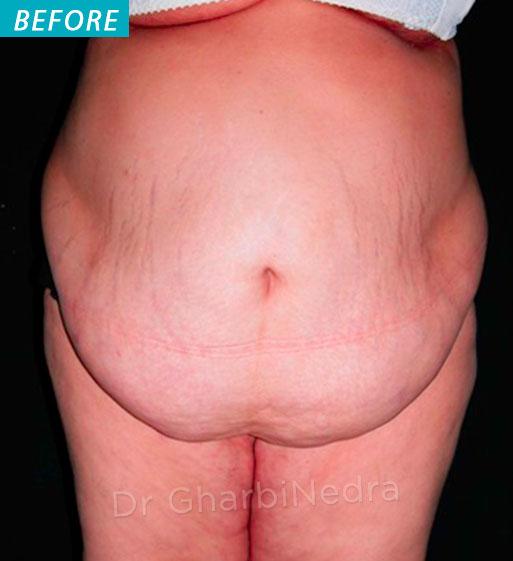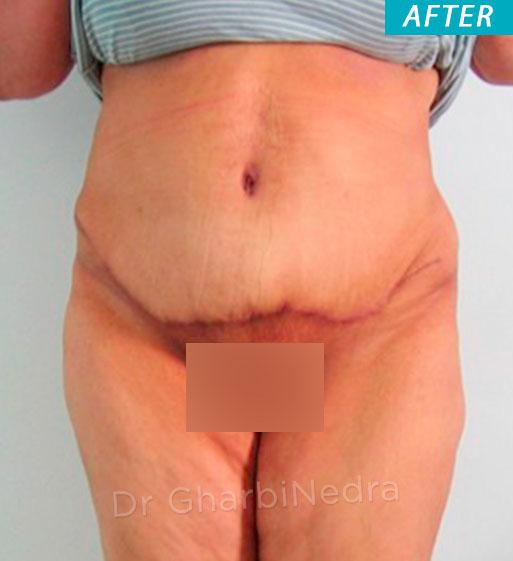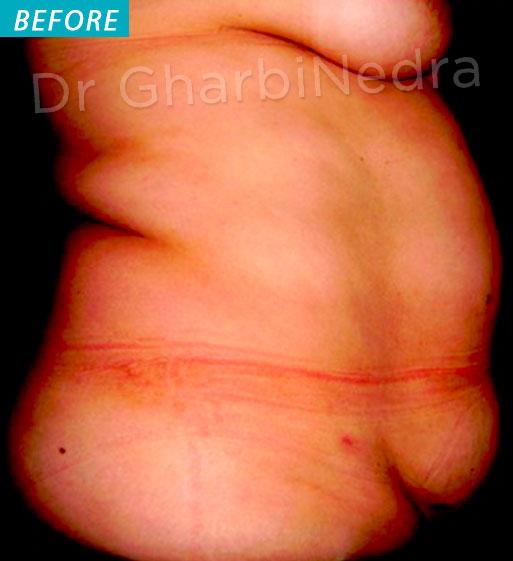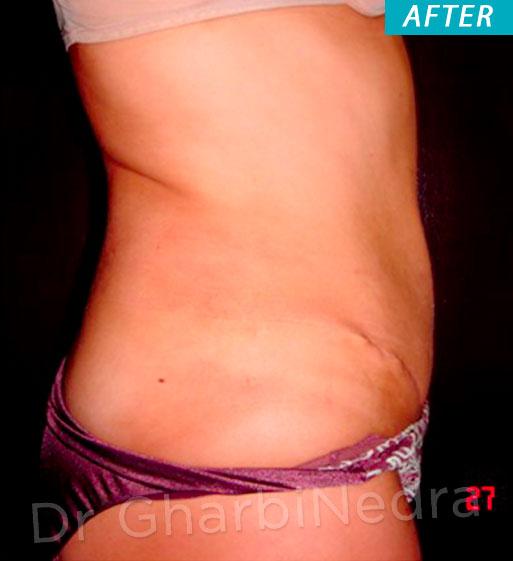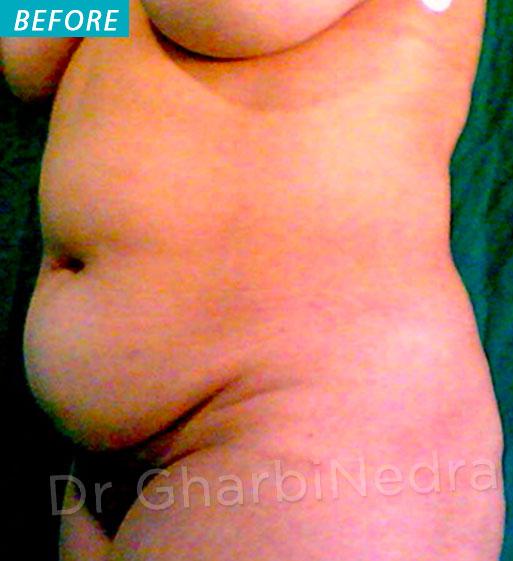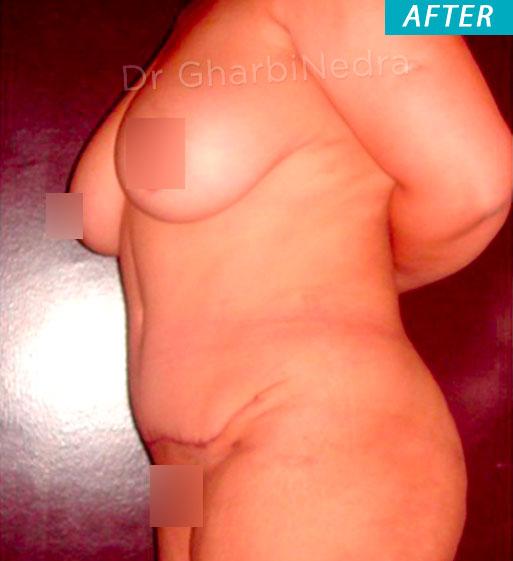Abdominal skin and fat excess often alters self confidence.
Liposuction has improved dramatically the outcome of abdominal aesthetic surgery, by reducing the amount and the length of scars.
There are different types of abdominoplasty depending on the patient’s examination.
Usually, there are two groups of patients : one requirering isolated liposuction and another requirering abominoplasty
The aim of this procedure is to remove the impaired abdominal skin (stretched skin, scars, stretch-marks) and tighten the remaining surrounding skin
Localised fat excess can be removed during the same procedure by liposuction and impared abdominal wall muscles may be treated too (widening, herniae).
The standard abdominoplasty (Tummy Tuck) removes a large amount of redundant tissue (skin and fat) from the middle and lower abdominal wall, between the belly button (umbilicus) and the pubic region, according to preoperative planning.
The healthy skin from the upper middle part of the abdomen is then redraped downwards in order to replace the removed impaired skin.
The belly button is preserved and put in its normal position through a hole cut and countoured in the newly draped skin.
This procedure leaves a scar. It’s length and position may vary with the amount and location of skin to be removed.
• THE PROCEDURE
Every surgeon has his or her personal technical habits which he or she adapts to every new case, in order to obtain the best possible results. However, there are common principles:
The position of the skin incisions, which will correspond to the future scars, depends on the amount of skin to be removed. The more skin there is to remove, the longer the remaining scars.
The excessive fat is aspirated with liposuction and the stretched abdominal wall muscles are tightened.
A molding dressing is made at the end of the procedure.
Depending on your surgeon and the extent of fat and skin tissue necessary to remove, the operation takes about 90 minutes to 3 hours.
• AFTER THE OPERATION
It is recommended to wear a pressure garment for 2 to 4 weeks, day and night.
You shall not go to work for 2 to 4 weeks.
The scars are often red during the first 2 or 3 months and progressively become paler starting from the third month onwards, during a period of 1 to 3 years.
• THE RESULT
It can be best appreciated one year after the procedure:
Concerning scars, you should know that they do fade away with time but never completely disappear. The surgeon does the sawing, but scarring is a patient-related process.
However, abdominoplasty offers an often noticeable aesthetic .
Abdominal skin and fat excess often alters self confidence.
Liposuction has improved dramatically the outcome of abdominal aesthetic surgery, by reducing the amount and the length of scars.
• THE RESULT
It can be best appreciated one year after the procedure: During this period, it is recommended to be patient while scars slowly fade, and collaborate with your physician for a regular follow-up consultation every 3 months during one year.
Concerning scars, you should know that they do fade away with time but never completely disappear. The surgeon does the sawing, but scarring is a patient-related process.
However, abdominoplasty offers an often noticeable aesthetic improvement. It enhances the patient’s comfort, quality of life and self confidence, thus helping him or her to reach for a better weight-control.
• POSSIBLE COMPLICATIONS
Abdominoplasty, even if performed for aesthetic reasons, is a genuine surgical procedure, with the consequent risks related to all medical acts, no matter how mild they might appear.
There are surgical and aesthetic complications.
Concerning anaesthesia, the anaesthesiologist will inform you about all the anaesthetic risks. You must be aware that anaesthesia can sometimes cause unpredictable body reactions that can be difficult to control. The presence of an experienced anaesthesiologist, in a surgical environment, means that the risks are statistically practically negligible.
In fact, techniques, products and monitoring methods have progressed considerably over the last twenty years, offering optimal safety, especially when the operation is elective and the patient is in good general health.
Concerning surgery: by choosing a competent and qualified Plastic Surgeon, experienced in performing this procedure, you limit, but do not entirely eliminate, surgical risks.
